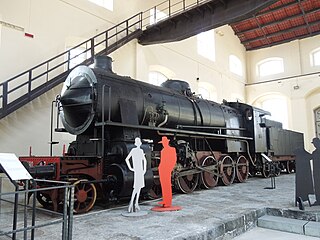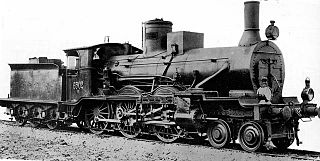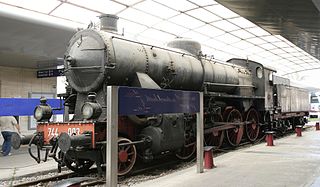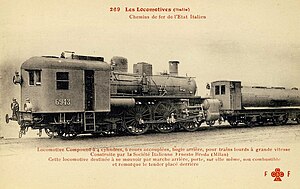
The Ferrovie dello Stato Class 740 is a class of 2-8-0 'Consolidation' steam locomotives.

The Ferrovie dello Stato Class 685 is a class of 2-6-2 'Prairie' express train steam locomotives. These are colloquially known as Regine, mirroring their fame as one of the most successful and appreciated Italian steam locomotives.

The Ferrovie dello Stato Italiane Class 691 is a class of 4-6-2 'Pacific' locomotives; they were the fastest and most powerful locomotives ever built for the Italian railways.

The Ferrovie dello Stato Italiane Class 690 was a 4-6-2 'Pacific' steam locomotive for express trains.

The Ferrovie dello Stato Italiane Class 746 is a class of 2-8-2 'Mikado' steam locomotive. These were the biggest locomotives ever built by the Ferrovie dello Stato, even though not the fastest, which were the Class 691s.

The Ferrovie dello Stato Italiane Class 470 is a 0-10-0 steam locomotive.

The Ferrovie dello Stato Class 480 is a 2-10-0 steam locomotive.

The Ferrovie dello Stato Italiane Class 650, formerly SFAI1181-1200 and Rete Mediterranea 300 Class, also known as "Vittorio Emanuele II", was the first steam locomotive in continental Europe to have the 4-6-0 'Ten-Wheeler' arrangement.

The Ferrovie dello Stato Italiane Class 940 is a 2-8-2 steam tank locomotive, derived from the Class 740 tender locomotive.

The Ferrovie dello Stato Italiane Class 680 is a 2-6-2 express steam locomotive; it was the direct ancestor of the very successful and appreciated Class 685.

The Ferrovie dello Stato Italiane Class 552, formerly Rete Adriatica Class 180 bis, is a 4-4-0 steam locomotive; it was the final development in Italy of the 'American' express locomotive type.

The Ferrovie dello Stato Italiane Class 600, formerly Rete Adriatica Class 380 and Società per le Strade Ferrate Meridionali Class 380, is a 2-6-0 'Mogul' steam locomotive; it is considered by some as the first Italian modern steam locomotive.

The Ferrovie dello Stato Italiane Class 835 is a 0-6-0T steam locomotive; it was the standard steam shunter of the FS.

The Ferrovie dello Stato Italiane Class 290, formerly the Rete Adriatica Class 350 bis, is a 0-6-0 steam locomotive.

The Ferrovie dello Stato Italiane Class 420, formerly SFAI Class 1200, Rete Adriatica Class 420 and Rete Mediterranea Class 480, was a 0-8-0 steam locomotive.
The Ferrovie dello Stato Italiane Class 310, formerly Rete Mediterranea Class 380, was a 0-6-0 steam locomotive; they were the first Italian as-built compound locomotives.

The Ferrovie dello Stato Class 741 is a class of 2-8-0 'Consolidation' steam locomotives, rebuilds from the FS Class 740 with a Franco-Crosti boiler; it was the last class of steam locomotives introduced in Italy.
Locomotives SFM 1-34 refers to a class of 2-2-2 steam locomotives of the Società Italiana per le Strade Ferrate Meridionali (SFM). They were designed for hauling fast passenger trains.
The Ferrovie dello Stato Class 745 was a class of 2-8-0 'Consolidation' steam locomotives.

The Ferrovie dello Stato Class 744 is a class of 2-8-0 steam locomotives; they were the last orthodox steam locomotives built for the FS.

















